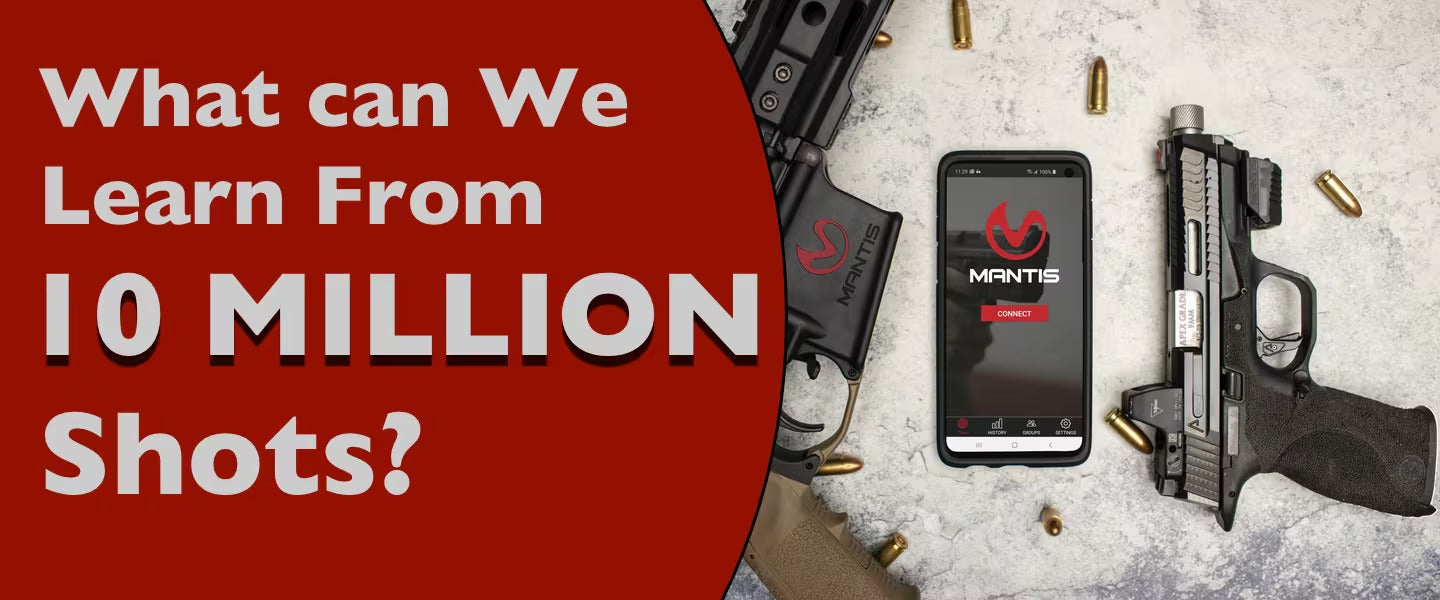
10 fascinating insights from 10 million shots analyzed
[In case you are unfamiliar: MantisX is a hardware device that attaches to your pistol and gives you real time feedback on your shooting technique. Like a fitbit for your pistol, rifle, shotgun, or even bow, MantisX tracks shooting for both live and dry fire practice.]
We've gathered more than 10 Million shots and have summarized some of the data to share some interesting insights and objective trends. Here's your glimpse behind the curtain with 10 interesting insights:
1. What is the most popular handgun? Sales data tells us. But a gun sold is different than a gun shot, and we want to see on what guns people actually pull the trigger. Let's start with the top 9 manufacturers:
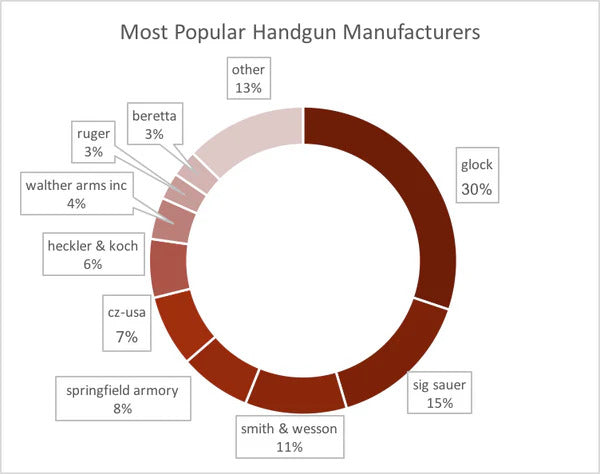
Glock takes a solid share at 30%, followed by Sig Sauer (15%), Smith & Wesson (11%), and CZ (7%). H&K, Springfield, Walther, Ruger, and Beretta round out the top nine.
2. What about the actual model of firearm? Behold:
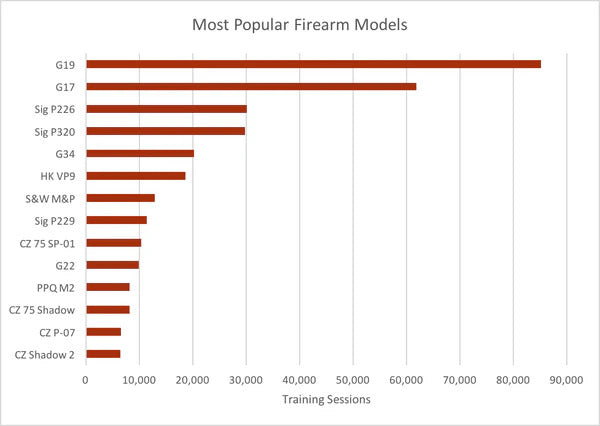
Glock 17/19 take almost half the sessions shot among the top 14 models. Not surprised? Extra points if you do some comparison between manufacturers on the first point as well as popular models. What's over-represented? What's under-represented?
3. Fascinating? Yes. But how do those shooters actually shoot? Here's where we enter Complexity Level 1. We'll segregate them into two categories: high-end target pistols (such as those with distinctly European names with odd vowels such as Hämmerli or Feinwerkbau), and the more common semi-automatics listed above. Why? This is apples and oranges, folks: go shoot one and you'll see. For now we'll just look at the more common semi-autos because, well, you probably don't care about those obscure target pistols (and their results make you look like a novice shooter AND there isn't enough data to run all the stats properly).
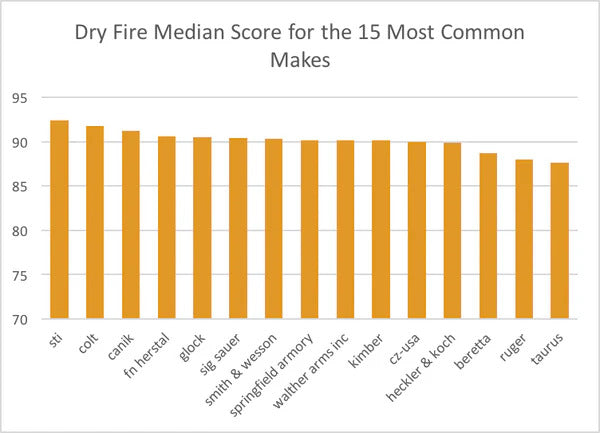
The top three all have a common trigger - could that be at play? How much is the gun, and how much is the shooter? More to come on this - just be patient.
And before you pass judgement on certain firearms, remember 1) the graph is scaled, and 2) some are absent.
4. "BUT IT'S DRY FIRE!" you say. "LIVE FIRE IS WHAT REALLY MATTERS!" We can hear you yelling through your keyboard. Fine. Here you go:
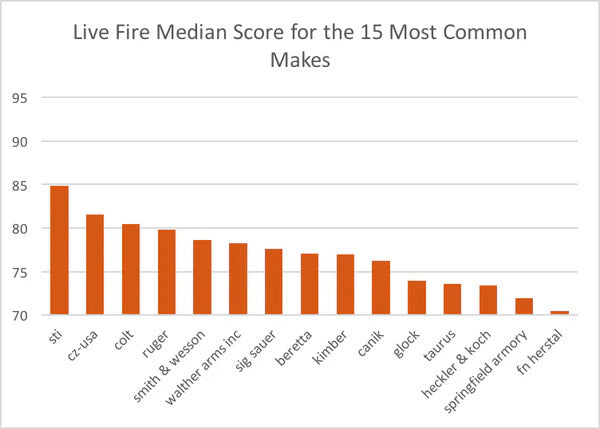
Some interesting shifts here. There are other factors that are filtered out here that influence results: the type of shooting, the intent of the shooter, etc. You can't blame everything on the gun.
5. We'll do the math for you: Shooting live is harder than shooting dry. Here is the average point drop between dry (higher scores) and live (lower scores), by manufacturer.
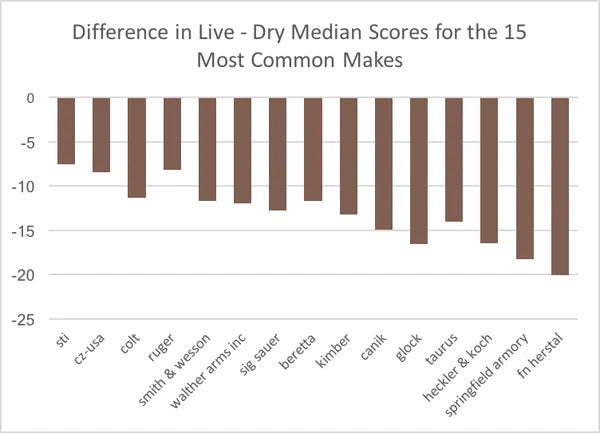
STI takes the cake with an average drop of only 7.5. Does the credit go to the shooters or guns? And while you most certainly agree that your choice of firearm is the best (while others gleefully disagree), let's all agree on this: that owning, and using, and training with a gun is better than not.
And let's take another minute to all agree: live fire trigger control is more difficult than dry fire trigger control. Same gun? Yes. Same Trigger? Yes. Different conditions? Yes. The impact of your psyche on shooting mechanics cannot be understated.
6. Live fire is harder, but in which way? We aggregated the data in sector and magnitude to more easily see the common tendencies. We equalized handedness to clarify the data (e.g. a RH shooter pulling low left is the same as a LH shooter pulling low right).
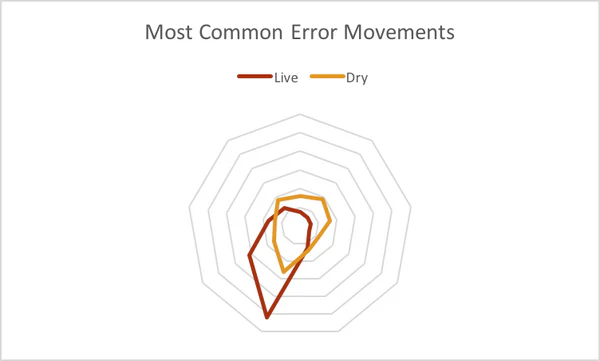
Anticipation, anyone? As expected. But still denied, far too often. And it is the biggest issue in both live fire AND dry fire. The data does not lie, so accept that fact, and make changes to improve it. Root out those issues in dry fire practice, and you'll see real results at the range.
7. So you're determined to improve. How many trigger presses will lead to the improvement you want?
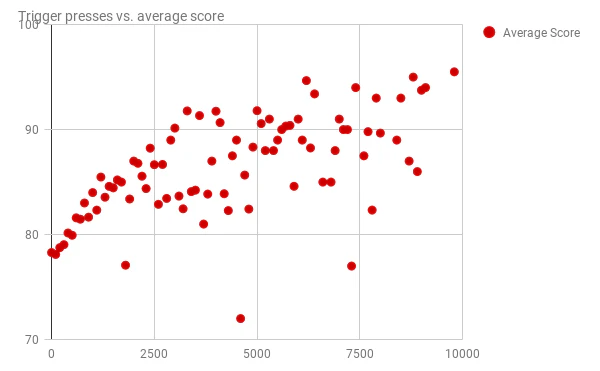
The average shooter with MantisX starts at an average score of 78. 2000 presses in, the average climbs to 85. Hitting 5000 presses, your average could be a 92. And when you get to 10000, you'll be averaging 95. IF.
If what? Practice without feedback can build training scars. Get the right feedback on dry fire, and you'll get the best results.
Also of note: look how quickly the initial improvement happens. 94% of shooters still improve within 20 minutes of using MantisX. When performance is measured, performance improves.
8. So you've done 10,000 trigger presses. You're at the top of your game. No one can touch you. How long do your skills last? We graphed the average session score vs. the days since the last session. As you look at the graph, note that consistency is strong, but falls apart the longer the time spent between shooting.
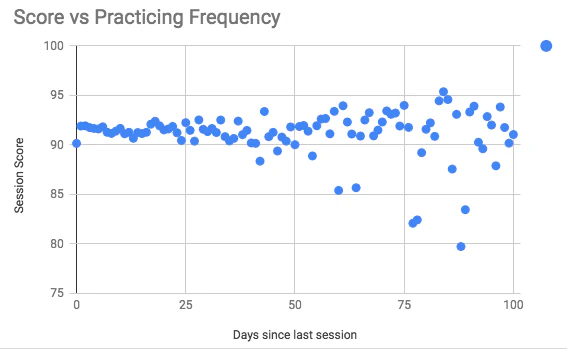
Shooting ain't like riding a bike - it's a perishable skill. It's like that tail that your amphibious ancestor from 6.5 million years ago used to have. Use it or lose it.
9. The crazies. The most prolific trigger pressers to date? Our most prolific shooter has logged 36294 trigger pulls (as of Aug 2018). He averaged 92 on his last 50 shots and has only been training with MantisX since January 2018.
Our second most prolific shooter comes in at 34k trigger pulls. His first two sessions were 73, and his last 5 sessions with MantisX averaged 93.
#dowork folks - it makes a difference.
10. This.
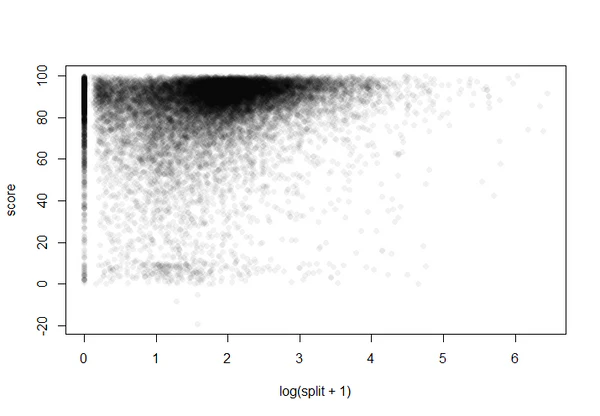
We aren't going to explain what it is yet, but you can see how much data is being analyzed, and what form it takes. Fascinating stuff that will change how we shoot. More to come.
With all that said, 10 quick conclusions in summary. Obvious as they may seem, it's comforting to have data back them up:
1) Glock reigns supreme.
2) The G19 reigns supremest.
3) 1911 triggers matter (it appears).
4) We shoot worse in live fire.
5) The same issues tend to dominate in both live fire and dry fire. Fix them in dry practice.
6) Perfect practice leads to significant, rapid, sustained improvements.
7) Not practicing leads to a decline - fairly quickly.
8) There are lots of people that train more than you. Stop reading this now and go practice.
9) You clearly didn't learn the lesson from conclusions 6-8. Reading a pithy article on the interwebs is no substitute for trigger time. Go practice now.
10) We're just at the tip of the iceberg of things that we can measure and analyze. More to come.
As our friend Bill Clinton, said, "It's the DATA, stupid." Data gives us answers. Some answers bring up more questions. Stay tuned for more data, with the accompanying answers - and questions.





